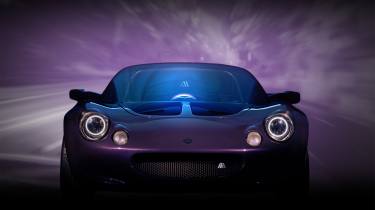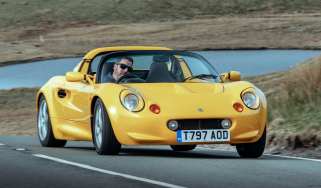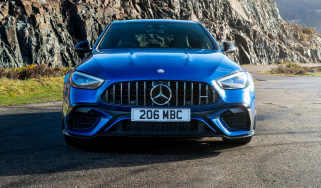New central-seat £350k Lotus Elise incoming – a GMA T.50 for a fraction of the price?
Can’t quite stretch to a GMA T.50? Analogue Automotive has developed a central-seat S1 Elise with a similarly fastidious approach to lightweighting, for £350k plus taxes…

This year marks three decades since the Series 1 Lotus Elise was first shown to the public at the Frankfurt motorshow, and to commemorate the occasion, Petersfield-based specialist Analogue Automotive has come up with what is possibly the purest, lightest and most meticulously engineered interpretation of the S1 yet.
Called the VHPK, it sits above the firm’s existing SuperSport as the sum of all Analogue’s Elise knowhow, with a full carbonfibre body, active suspension, a 250bhp+ K-series engine and most significantly, a GMA T.50-style central seat. It doesn’t cost GMA money, but at £350k plus taxes, you’ll be turning down top-flight modern supercars like the Ferrari 296 Speciale and Aston Martin Vanquish to buy one. Having experienced Analogue’s creations first hand, we can say that might not be as absurd as it sounds – they’re beautifully executed and an absolute treat to drive.
Just 35 examples of the VHPK will be built, each starting life as a bare S1 Elise shell. From here it’s totally re-engineered to a higher standard than Hethel managed in the 1990s, with significant upgrades in all areas that matter. Rather than the common Honda engine swap, Analogue retains the Elise’s Rover K-series motor (it’s lightweight, compact and perfectly suited to the S1’s brief) and rebuilds it to produce over 250bhp. That’s no small task when the most powerful factory S1 Elise, the ultra-rare Sport 190, tops out at 190bhp. The extra power doesn’t come from forced induction either, but a total reworking of the internals – including an enlarged 1.9-litre capacity, new pistons and a billet crankshaft. It revs higher than standard too, up to 8500rpm rather than 7200rpm. In theory it can go beyond 9000rpm, but Analogue caps it lower for durability.
Poke around an S1 Elise and you’ll do well to spot any excess flab, but Analogue has managed to peel away more than 100kg from the standard car’s kerb weight, bringing it down to 600kg (including all fluids and a splash of fuel). An ultra-light carbon body is partly responsible for the saving, weighing around half as much as the standard fibreglass panels, as well as carbon wheels and carbon ceramic brakes. The new brakes mean bigger calipers than the standard two-pot front and single-piston rear items – a wise move given the VHPK has a power-to-weight ratio in excess of 420bhp/ton, beating the new Porsche 911 Turbo S.
Analogue’s creations are road cars first and track cars second, but the VHPK is said to have an extra element of focus without making it harsh and compromised on the road. Suspension is by active dampers with wide-track wishbones and spherical bearing mounts, with the option to stiffen the setup when needed for track use. A Motec wiring loom ties the electronics together.
One obvious limitation of the VHPK is that only you, the driver, can come along for the ride, but the payoff is an evocative centralised seating position that McLaren F1 and T.50 owners will be familiar with. Why the middle seat? It’s a callback to the one-make Autobytel Lotus Championship race series that ran in the early noughties, featuring single-seat Elises. The VHPK employs similar solutions to the race cars to make the configuration work, such as an extended UJ linkage from the steering rack to the column, but much of it is bespoke – including the dash panels either side of the central binnacle. The gear linkage uses new cables to the back of the car, and given the lack of a central tunnel where the handbrake normally lives, the VHPK is possibly the first Elise with an electric handbrake.
Orders open for the 35 numbered examples of the VHPK next year. Can an Elise ever be worth over £350k? We’ll let you know when we drive it.






